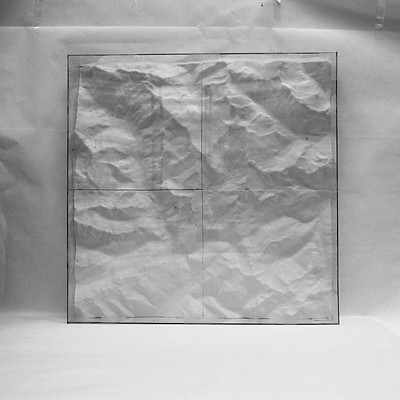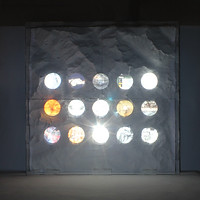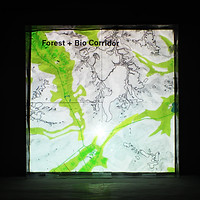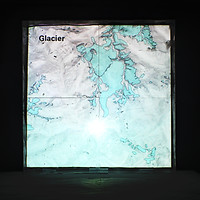STOREHOUSE OF THE EARTH
To Document the Fast-changing Environment
Part I. Research
ABSTRACT
In the book Silent Spring, Rachel Carson argues that humans are one species that could modify its surroundings so drastically as to cause damage to the Earth. Currently, as a consequence of accumulated modification, the rapidity of environmental change accelerates and causes hazards all over the world. Though the earth is always changing, the current speed of change is unprecedented and problematic.
The site of this thesis, the Rhone glacier and surrounding area, shows the drsatic speed of change. The Rhone glacier, 11,500 years old, is one of the oldest glaciers in the Alps. However, scientists estimate that this glacier, along with 94% others in the Alps, will disappear in 100 years due to climate warming. When the environment changes slowly flora and fauna can adapt to the change. However, species that are vulnerable to small changes become extinct.
Numerous disciplines document the alarming changes taking place including art, science, photography, and film. Each uses unconventional methods to document the rapidly-changing world. I call this new type of documentation culture the “culture of capture.” Its preconditions are [1] a shared concern about the extinction of species and the loss of the landscape and [2] the use of new technology to document every detail of change.
This thesis argues that architecture is a unique medium that can both document the changing environment as well as have a positive impact on the physical form. I propose two architectural interventions: a ‘glacier blanket’ and a ‘mountain hat’ to delay change and to archive the physical remnants of the melting glacier and nival plants. The future scenario of the site, which consists of four aspects, Glacier retreat, Bio-Diversity, Tourism, and Infrastructure, is complicated and constantly varying. The architectural documentation will also be an intricate system that adapts its function and form.
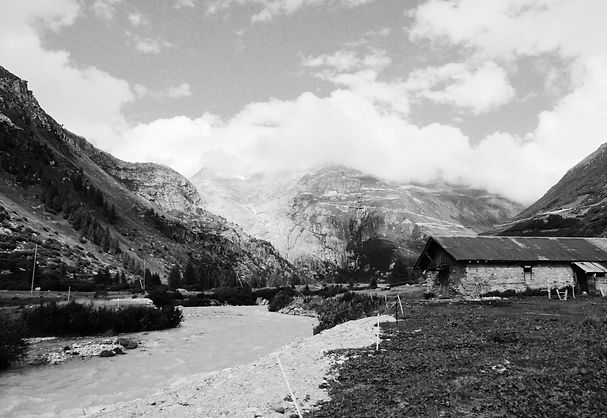
Rhone Glacier © 2015 Namjoo Kim
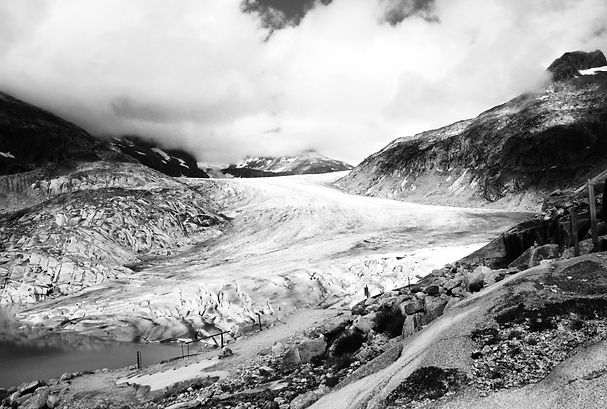
Rhone Glacier © 2015 Namjoo Kim
Catalogue of Culture of Capture
New Method of Documentation
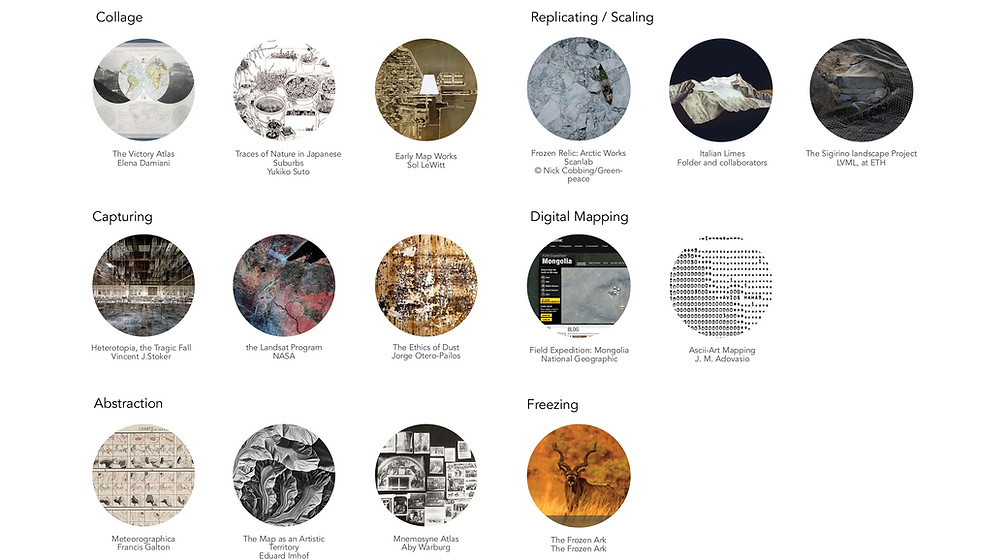
I categorize documentation projects under the culture of capture according to the method they use. There are seven categories: Replicating, Scaling, Digital Mapping, Collage, Capturing, Freezing, and Abstracting. Especially, replicating and scaling are very interesting methods to document the landscapes, since they can replicate the original form precisely and display it in various sizes.
This thesis argues that architecture can borrow these methods from other media to communicate with the public and evoke a powerful memory of landscapes. This thesis also wants to demonstrate that architecture has a capability to document the outside world by itself instead of being a container of other media. This is a very interesting argument because historically, architecture has been a repository of maps, art, and documents but not an active medium to document the world.
Four lenses to see the future
and Elements in the future scenario
The future scenario of this thesis is based on IPCC A1B scenario, which is a moderate version compared to other scenarios because many GCM(Global Climate Model) and RCM(Regional Climate Model) of Europe use A1B scenario to estimate the climate changes in the future. Figure 2 shows the projected global annual mean surface air temperature change under the A1B scenario.



The future scenario in which this thesis is projected consist of four categories, Glacier retreat, Bio-Diversity, Tourism, and Infrastructure. I have extracted this four different lenses from different disciplines such as climatology, glaciology, geology, biology, economy, and policy. Each of this discipline has its own scenarios, which stands alone. I drew from these multiple scenarios to make one combined scenario where architecture can intervene in.

2020 AD
Current situation of the Alps
2100 AD
The environmental changes in the future

New Future Scenario
with Glacier blanket and Mountain hat
This thesis argues that architecture is a unique medium that can both document the changing environment as well as have a positive impact on the physical form. I propose two architectural interventions: a ‘glacier blanket’ and a ‘mountain hat’ to delay change and to archive the physical remnants of the melting glacier and nival plants.
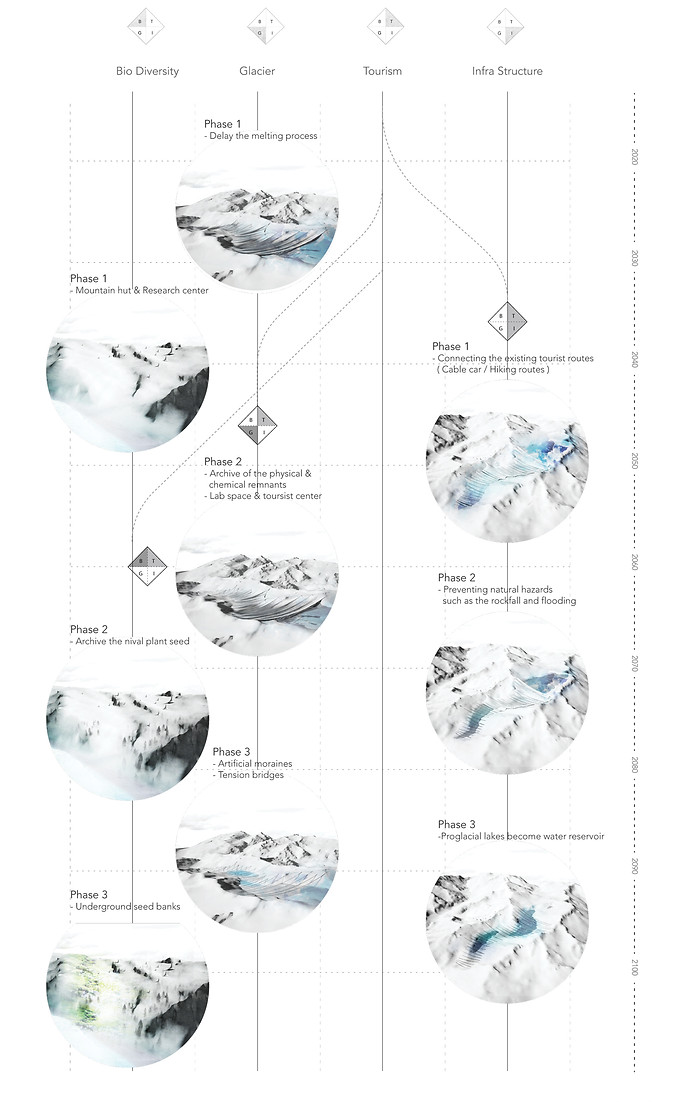
System
Glacier blanket and Mountain hat
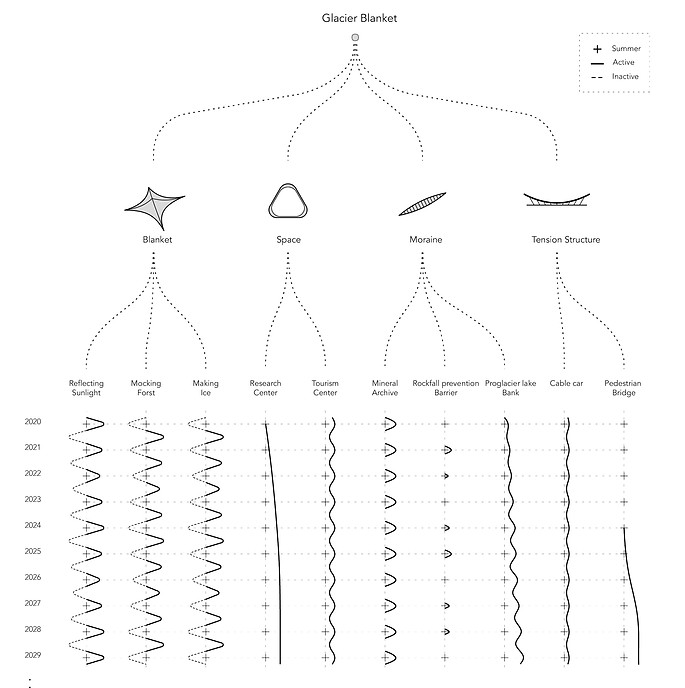
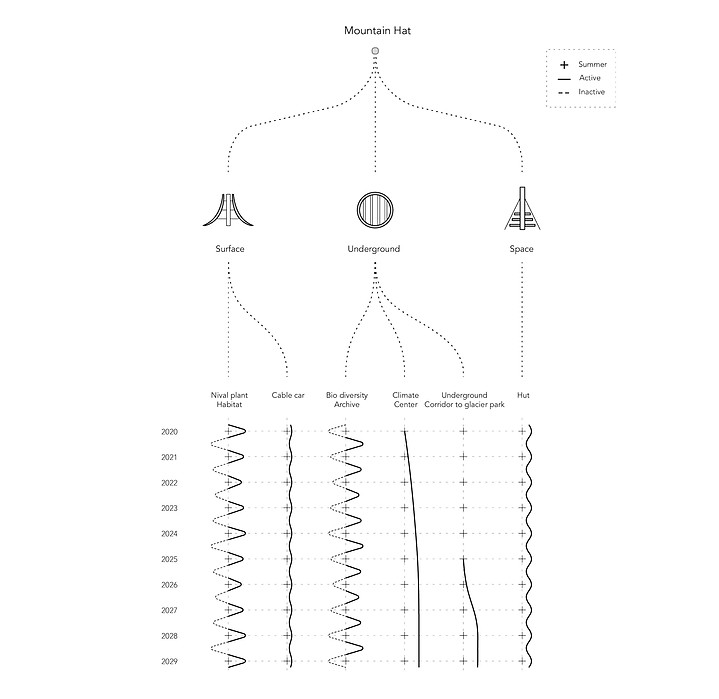
System
Artificial Moraine
The mineral dust from the melting glacier provide long-term records of the Earth, and by archiving them in this architectural device, this valuable historical records can survive. In the glacier blanket, there are three different structure system: tension structures, which support the fabric, air structures, which provide indoor spaces for researchers and tourists, and flexible structures, which will become archives. The flexible part will sink when the glacier melts to collect gravels and mineral dust from the melting glacier. Eventually, this archive will sit on the bed rock after the glacier disappear. The process and shape of the archive are similar to the moraine formation; therefore, I call the final stage of the archive “artificial moraines.”
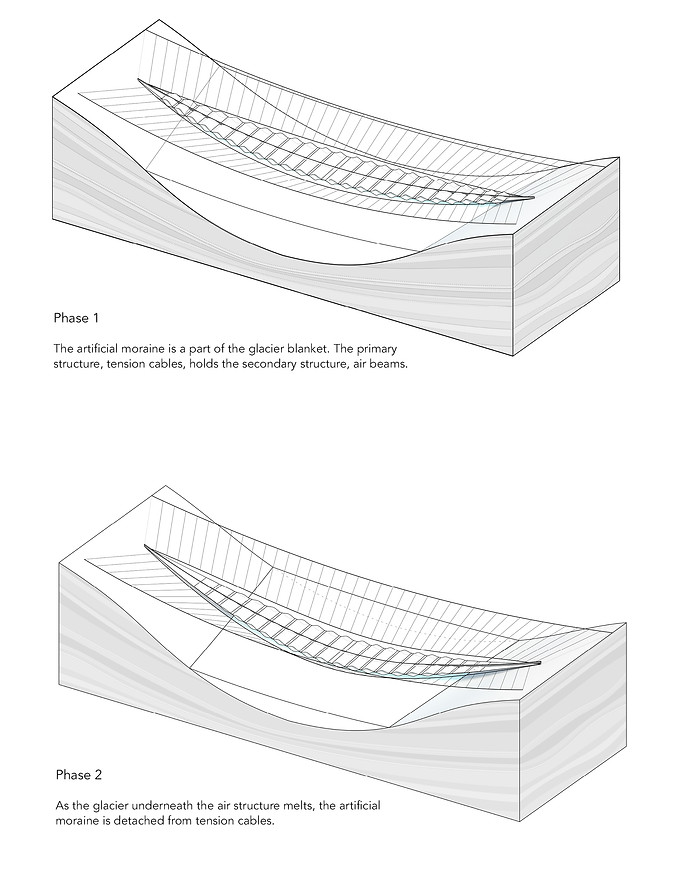

Projection / Mapping
Site Model
8 x 8 x 4 inch
1: 60,000
